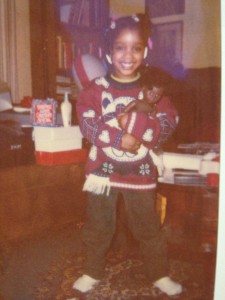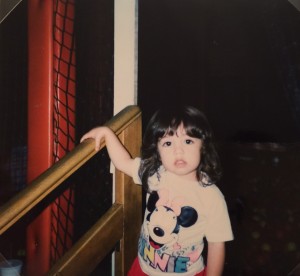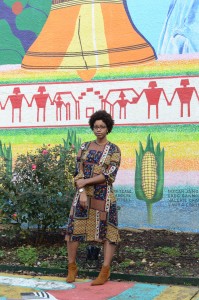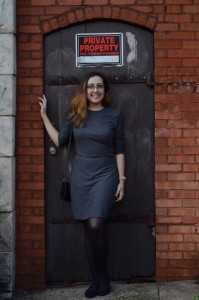There are 35,000 museums in America, but only 95 of them are dedicated to or celebrate black and brown individuals. Recently, I came across The Brown Girls Museum Blog, a museum that sheds light on two‚Ķ you guessed it‚Äîbrown girls’ appreciation and experiences in the museum industry. Ravon Ruffin and Amanda Figueroa built a museum community of people like them and are interested museum minority experiences.
On their blog, it states they met on a beautiful spring day outside of an uptown D.C. cafe. The pair sat down and interviewed each other about their professional experiences, favorite things, and ultimate goals. In learning about one another, Amanda learned that Ravon’s favorite compliment is when she’s complimented on her smile. In Ravon’s interview, she Amanda asked her if she had to put together the perfect outfit for a day on the go, day to night, what would it be and why, she included print ballet flats, as they are a staple in her wardrobe. After being tickled by their interview of one another, and their passion to create a space for girls and women of color to share in their love of museums, I wanted to learn more about them.
As a young girl, what type of art, or visual culture were you drawn to?
Ravon: Interesting question, as someone who is so invested in the images produced by the museum in her adult life, I did not grow up going to museums. I found myself drawn to the images of the women around me and their everyday aesthetic. For some time I wanted to be a fashion designer, then an interior designer and from there my attraction to design progressed.
Amanda: When I was growing up I loved drawing and illustrating. I remember taking my art classes very seriously when I was young, and trying to copy the art I saw in picture books or cartoons. I loved the images that I saw and I wanted to learn to make them myself.
Who or how were you introduced to museums? At what age, and what was is the first experience you can recall?
Ravon: A school field trip in Chicago. I was in junior high school in the 8th grade. We went to a few places, but the DuSable Museum of African American History made a lasting impression on me. I remember feeling as though our tour guide had unlocked some hidden history I didn’t know about myself.
Amanda: I can’t recall my first experience with museums, probably because I attended them so regularly. My mom is an educator, and when she wasn’t volunteering at my school and attending field trips, she was always finding ways to give me other learning experiences outside of the classrooms. Museums and libraries were huge in my childhood!
When did you begin to form a relationship with museums? How did you continue to develop your appreciation, understanding and love for museums?
Ravon: Sadly it did not begin sooner, but fortunately, it developed during my senior year of undergrad rather suddenly. I had, through a winding journey, stumbled upon the ability of museums to speak to the lives and experiences of those in my community and wanted to share that. It is not an easy thing to do considering the history of the institution but I keep my appreciation and love by actively seeking out the museums and cultural institutions around me, rather than waiting for them to come to me. It’s about seeing for myself and developing my own relationship with the museum rather than basing it on someone else’s relationship.
Amanda: I have always felt like I had some kind of relationship with the museum field, but when I came to graduate school, that relationship changed from viewing myself as a fan or patron to considering the way I could be a part of the institution as a creator. My first semester, I took a course called American Material Culture that was actually taught “behind the scenes” at one of the Smithsonian museums. That was the first time I got the backstage perspective on the institution and started to consider how I could make a career in the field.
How did come to know each other? And how did your friendship lead you to co-create and curate a museum blog?
BGMB: The blog came first! We met in graduate school originally but didn’t start thinking about blogging together until a few months into the program. At a club event we got to talking about our shared experiences of feeling on the fringes of the museum industry as people of color, and our mutual interest in writing about these experiences. We agreed that there needed to be a space for voices like ours to be highlighted — and about a month later, the blog began!
What’s it like running a museum blog? What is the most exciting part about running a museum blog? About being a curator?
Ravon: So glad you used the word “curator.” Every aspect of our site is intentional. And, from the beginning, we have been really excited to present something meaningful to our peers to want to be a part of and to find new ways to challenge the field. It’s a labor of love, and to know in some small way we are influencing cultural institutions and those who help build them is the reward.
Amanda: The most exciting part about running the blog to me is getting to feel like a part of the museum community in DC. Before the blog, I often felt like an observer or a visitor, but with the blog, we are able to create content and form opinions that actually get shared and talked about within the field. People see what we are doing and actually care about our input, it’s amazing.
What is the most challenging aspect of managing a museum blog and how are you overcoming that challenge?
BGMB: The biggest challenge so far with having the blog is making it a priority along with our regular grad school responsibilities. With a lot on our plates as young professionals and full-time students, sometimes it is difficult to make time for anything extra like the blog. But we both see BGMB as a labor of love, something that is worth putting the extra effort into in order to help the communities we care about, both artists and activists of color as well as museum professionals.
How are you growing your target audience?
BGMB: Right now it is really about being present. Showing up to events, symposiums and conferences, and letting people know we are here. We enjoy connecting with people online, more than just sharing our blog content, but engaging in “tweetchats” and relevant dialogue. We have been attending live events in Washington DC and planning our own in order to bring more people from our circles together.
How did you come up with the concept of photo tours?
BGMB: From the start we are hoping that BGMB will be an interactive, collaborative space for marginalized people to find their way into the museum institution — photo tours are just one part of that. If people can interact with more than just words, it really helps drive the message home.
What are some projects BGMB worked on in the past? Can we look forward to from BGMB? Do you have any exciting projects in the works?
BGMB: From the start we have been active in attending a wide range of museum, scholarly, and community programs to influence the content we share on the site in various ways. We recently hosted our first event, a combined launch party and stakeholders meeting to bring together those who, from their varying professions and specialties, support us for an opportunity to connect with one another and hopefully spark some collaborations. We can’t go into too much detail in regards to what we have in the works but stay tuned. We are always interested in finding new ways to engage with museum professionals, artists, academics, and activists.
In the next 5 years, where do you see yourselves individually and for BGMB?
BGMB: Wow, the best thing we can hope for is to continue growing the blog and our supporters. We hope that one day Brown Girls Museum Blog will be thought of as a collective, a space for emerging professionals and seasoned professionals alike with a range of perspectives and identities. We are just two brown girls but we hope to share the space with so many others. Individually, we hope to remain involved with museums in some capacity.
To share in wonder of The Brown Girl Museum Blog, feel free to share your experiences with museums under the tag Submissions and follow them on Twitter: @2brwngirls.
-Danyelle R. Carter
Junior Girl
Girl Museum Inc.




